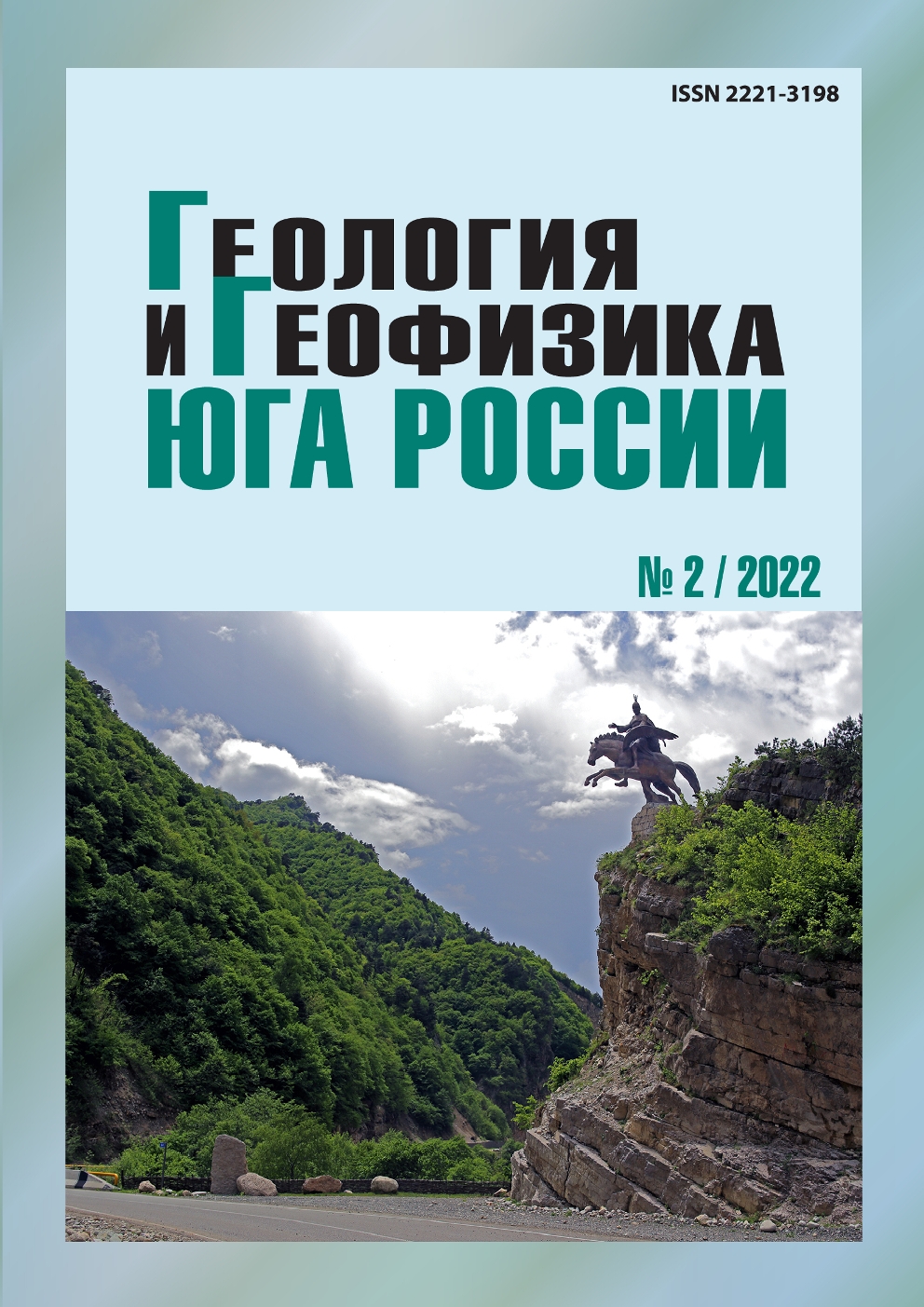Early Cimmerian volcano-plutonic formations of the Sadon group of polymetallic deposits in North Ossetia: geodynamic typification and minerageny
Abstract
Relevance. In the southern part of the Scythian plate, in the Digoro-Ossetian zone of the Greater Caucasus, early Cimmerian volcanic–plutonic formations are known, with which the polymetallic deposits of the Sadon ore field are spatially associated. Geochemical studies of these rocks are necessary to clarify the geodynamic development of the region and assess their ore potential. The aim of the study is to decipher the geodynamic position of volcanic and plutonic rocks and their mineragenic specialization. Granitoids of the Tsey complex, which are distributed in the southeastern part of the Adaikhokh salient, and effusive rocks of the Sadon suite in the Shtulu-Khares depression and in the eastern part of the Balkaro-Digorsk salient of the Greater Caucasus, were chosen as the object of study. Methods. Petrographic description of rocks, analysis of samples by XRF, ICP–MS; calculations of geochemical characteristics; construction and analysis of diagnostic, discrimination and multi-element diagrams; comparison of the concentrations of rare and ore elements in the studied and reference rocks of similar petrochemical composition, but formed in different geodynamic settings. Results. It has been established that early Cimmerian igneous rocks are normally alkaline and less often moderately alkaline formations of the calc-alkaline series. Effusives – andesites, dacites and rhyodacites – are moderately titanium, high and moderately magnesian formations with potassium-sodium and sodium types of alkalinity. Granitoids are magnesian, high-alumina formations similar to andesitic granites, but differing from the latter in lower contents of Sr and Ba. They are dominated by signs of I-type granites with deviations towards M and S-type granites. The multielement spectra of volcanics and granitoids are of the same type. The spectra of andesites normalized to N-MORB indicate their enrichment in LILE and HFSE. Depletion of TREE rocks and negative anomalies of Nb, Ti, Y are noted. The initial melts were formed due to dehydration melting of the lower crustal rocks of the basement of the Scythian plate, which occurred with the participation of mantle melts with E-MORB similar characteristics. It has been established that the Early Cimmerian volcano-plutonic formations were formed on the active continental margin in a post-collision setting, at the initial stage of back-arc spreading. The rocks are characterized by high fluid saturation and elevated silver content. The prospects of the southern margin of the Scythian plate for the discovery of new polymetallic ones are assumed, Au–Ag–polymetallic and Au–Ag deposits not yet exposed by modern erosion.


